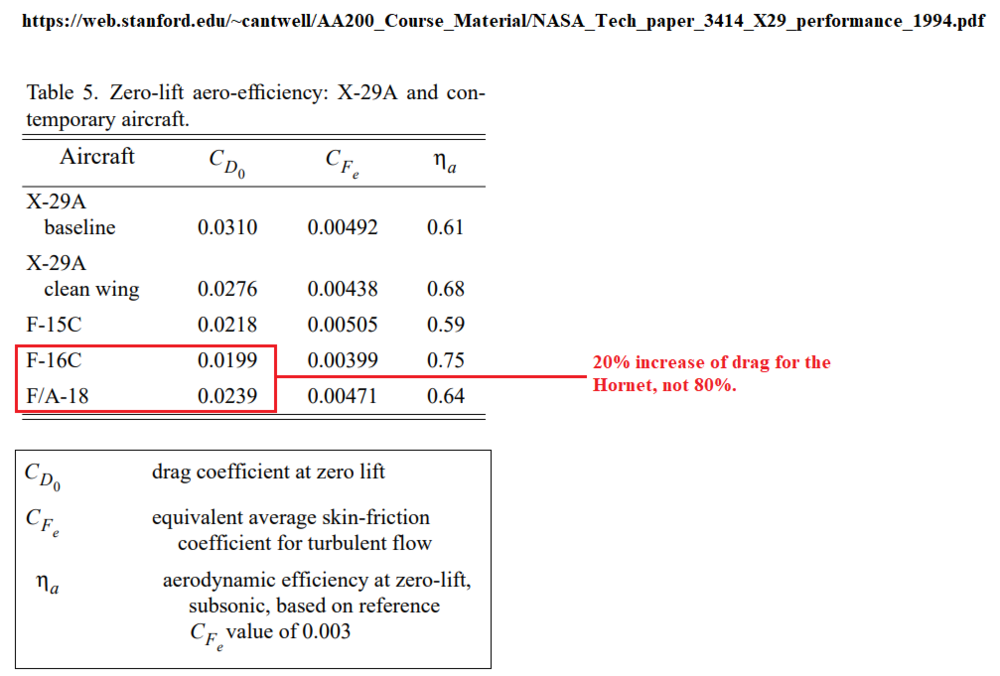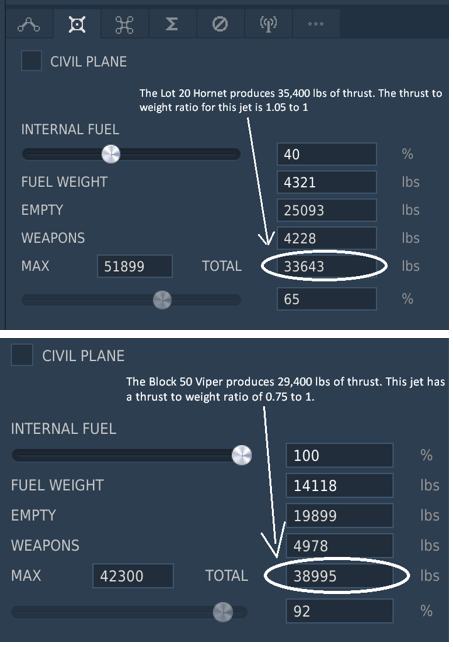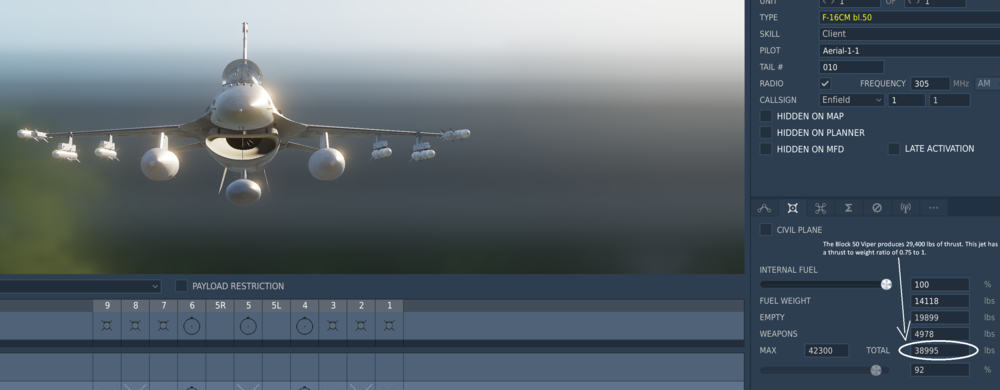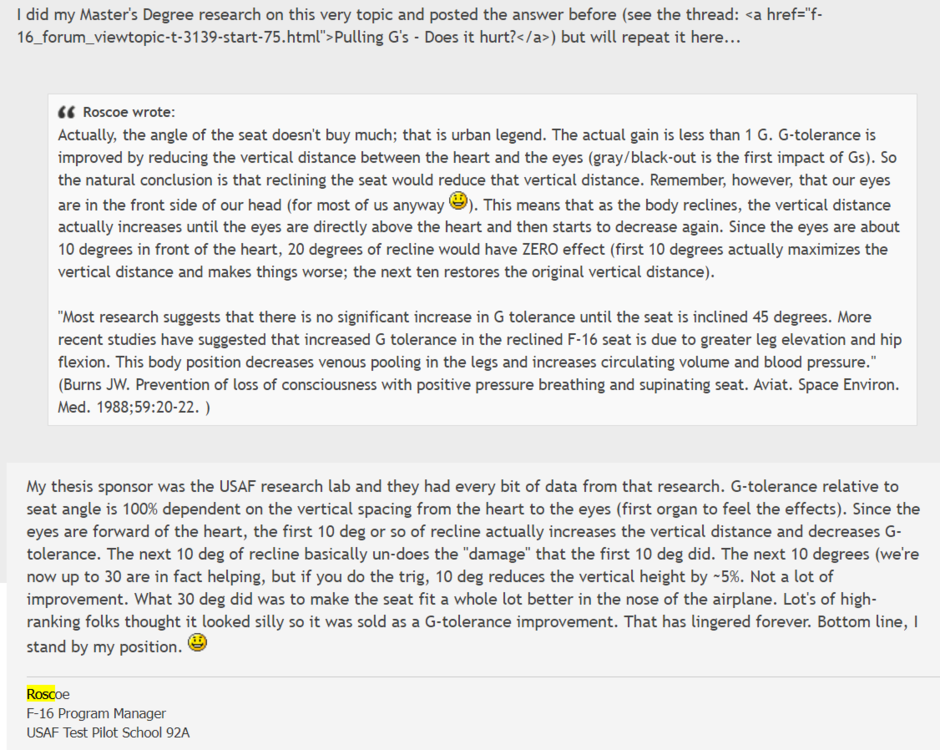-
Posts
1963 -
Joined
-
Last visited
-
Days Won
1
Content Type
Profiles
Forums
Events
Everything posted by wilbur81
-
Hey, Mr. Grey, Wags and the Eagle Dynamics Team... I just wanted to extend to you a hearty, "Thank You" and "Well Done" regarding the current state of DCS Open Beta. You can see in my signature that I'm running DCS on a humble GTX 1070 and not-brand-new 8700K CPU. As slow, gradual improvements are often not noticed or acknowledged by users, it just occurred to me that I'm tooling around in DCS, at full 4K and plenty of new clouds, units, in MP, SP, etc. with the settings below; all the while fluctuating between 30-50 FPS, and remarkably smooth in most cases, even when down in the 30s. There are obviously some challenges with my hardware (read: "Supercarrier with it's tower lights on and rain droplets on the canopy ), but overall - VERY pleased with the performance I'm getting in an era where there's no way I can afford to upgrade my GPU. This is a testament to all the work you've put in, all the while juggling MANY different modules, demands, etc. Well done! - W
- 22 replies
-
- 8
-

-
- gpu
- performance
-
(and 1 more)
Tagged with:
-
I haven't noticed anything except this: it seems like accelerating now leads to a rising of the velocity vector that I've never noticed before? Not sure if this is something that, in real world, the FCS would dampen out? But maybe I'm just imagining this as well. Anyone else noticed this VV rise when accelerating after the update?
-
Thanks for the fix!
-
Hey, Tobias. Yes, I did some re-testing of the mission shown, in my original reply to Carbon715, above with the drag values for the Viper. The new go at the FM definitely seems to fit the speculation that 3-bags; 6-Amraams, would in fact slow the Viper down slightly more than a slicker, no bags, only 2 pylons, and lighter Hornet... at least at the mid-teens altitude that I test both at. Karasawa... I'll have to tap out. I appreciate the formulas, and dynamic thrust conversation, etc... but I've reached my own max drag index. Here's my 'bug-out' from our conversation: Lot 20 Hornet has more thrust than Viper, but not exceptionally more. Blk 50 Viper's GE engine is a MONSTER, much more powerful than Hornet's -402, but it only has one of them. Hornet is a draggier and heavier airframe than the Viper, which is why, all things being equal, the Viper has a higher T/W ratio. A Viper loaded up with drop tanks, Amraams, Pods, etc. will have a lower T/W and higher drag index (and therefore not be able to outright outpace) a slick, lighter configured Hornet. All things being equal, the Viper will outpace the Hornet a good deal. All these things above are currently exhibited in DCS with the Viper's sweet new (and Hornet's past) FM updates. So, I'm going to trust that ED and their team are privy to all the charts, formulas, and SME's and will do the work to keep us all rocking towards better and better 4th Gen jet simulation. And so, Carbon715: Yes, as you've tested and seen, the new FM for the Viper has apparently gotten (just like the Hornet received a year or more ago) some more realistic drag simulation that slows it down in certain regimes a bit more than before, when its FM was less fully baked... RTB'ing
-
Why are you only multiplying the ZLD CoE by wing area when fighters get lift (and drag) from the other parts of the aircraft (including stores and pylons that may or may not have been hanging for these various tests? And what is the drag index loadout for 50 on the Viper?
-
I think you may have done your math in the wrong direction for the Hornet's drag. Assuming the numbers below from this NASA testing (which are pretty much the ones you cited above, the Hornet has 20% higher Zero-lift Drag than the Viper, not 80%. Again, I think you just took your math the wrong direction.
-
**Please Disregard** This behavior was only repeatable on one (older) mission. With further testing, it seems to be working as normal.
-
Gotcha... no worries. Wasn't quite sure what you were referring to with the Cruise missile allusion, but the A model Hornet could Super Cruise in certain configs. Though not as sleek as the Viper, the clean Hornet can get movin' a bit as well.
-
Sorry, man... I'm clearly a very simple man and I'm just not following you when GE themselves say their engine produces 29000lbs at Sea Level. Not sure what else to say there...though I could understand that thrust 'class' certainly could just be an "averages" way to talk about a more dynamic thing. They certainly could market their engine better by going with your dynamic numbers of 35K lbs at Sea Level. As to drag indexes of 50, "speed has almost nothing to do with T/W ratio," etc.... T/W has everything to do with speed, as long as drag doesn't over-compensate for thrust. The EM charts, as far as I'm aware, don't give you the three-bag, six-missile type info. So, drag index of 50, M1.9 capable - My questions: Does a Viper with three full bags and six Aim120C's (two of which are on the wingtips) have a Drag index greater or less than 50? Or, put another way: are you claiming that the Viper will do M 1.9 in the configuration shown in my example above? ED clearly doesn't believe so... for good reason. I'm not sure if you've ever read Hasard Lee's account of taking a completely clean Viper on a top speed run, but here's a brief excerpt: "Despite a significant amount of thrust still coming from the engine, the drag at 1.9 Mach [at 35K feet] caused the jet to rapidly decelerate, pushing me forward until my shoulder-harness straps locked." https://www.sandboxx.us/blog/this-is-what-its-like-to-take-an-f-16-to-the-absolute-limit/ And finally, Karasawa... I'm not quite sure what to make of your private message to me that stated: "Hi, thank you for these info. A 402 powered hornet should perform very closely to a viper." Are you using a different persona on the Public forums from your Private Messages? I'm just a bit confused, which I know you're very comfortable pointing out.
-
-
Indeed. I remember the first update a good while back when the Hornet first got its more realistic pylon drag implemented... and I wasn't happy. After that initial, "What did they do?" moment, I felt good about them getting closer to real-world for sure.
-
Literally everything you've stated in the above quotation is valid. I was responding to Carbon715's post with my test, not trying to say all there is to say about 'all the things.' Taking into account ALL that you've stated above, it is still VERY WELL possible that the DCS Viper is now more accurately depicting stores drag, which is why it appears draggier than before in highly loaded configs compared to more well-baked flight models like the Hornet.
-
I have taken these other variables into account... there is absolutely no question that the Viper is a sleeker (and in my opinion, a better looking ) and less draggy design than the Hornet, with less parasitic and overall airframe drag clean than an also clean Hornet airframe. The question you're seeking to answer is this: Does a three bag, six missile Viper at nearly full weight, heavier than the Hornet, have less drag than a no-bag, two pylon and lighter/higher T:W Hornet? I will let you PM the devs to have their experts answer that question and/or explain to you the rationale behind why they (may) have adjusted the drag on our latest Viper. As to your "Always trying to prove that the DCS F-16 should be nerfed" comment... I am a day-one pre-purchaser of the DCS Viper, have a 1:18th scale Viper hanging over my simpit (which is covered in 5 different Viper Sqd patches) have some real simulator time on the USAF ANG Blk 30 sim, close contact with a good friend who flies Viper's for the 75th (YGBSM) at Shaw, etc. I've been a Viper fan longer than the Hornet... ...but getting closer to reality is not nerfing. Ad hominem never makes one's case look very plausible.
-
This is probably ED getting a more accurate pylon/stores drag model on the Viper. The Hornet in this little test mission I created before yesterday's update has a better than 1:1 thrust to weight over the Viper's only 0.75:1 (the weights of both jets are shown in the screenshots attached). The Viper achieved Mach 1 in the exact same amount of time (32 seconds from mission start with full A/B and altitude hold, at the same altitudes and starting airspeeds) as the Hornet that had thrust to spare. Additionally, the Viper achieved a maximum speed of Mach 1.26 while the "slicker" Hornet only achieved Mach 1.2. Again, the Lot 20 Hornet's two F404-402s produce a total of 35,400 lbs of thrust while the Block 50 Viper's F110-GE-129 only produces 29,499 lbs of thrust. It sounds like they have gotten the drag values more realistic for the Viper.... but I've yet to test my attached mission on yesterday's new update. ViperHornet TtoW (1).miz
-
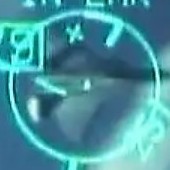
Can we expect any new features in the future?
wilbur81 replied to Digitalvole's topic in DCS: F/A-18C
An air lunch decoy could help a lot of folks who struggle to say 'no' to those extra calories at mid-day-meals. But seriously, as someone who RELISHES landing the Hornet manually on the carrier in all weather, day/night... I'll take a complete, 99% bug-free, fully MSI integrated and working TWS, air-to-air radar before even thinking about anything you've listed above. -
I've been compiling a list of Radar bugs (air to air stuff only) that are already marked "reported" or "investigating" that I've been considering asking ED about the possibility of either: a) Creating a separate "Radar" subsection in the bugs area of the forum. or b) Allowing for a sticky thread of marked -"reported" links to each and every Hornet Radar bug. This would merely be to keep important radar bugs from getting more and more deeply buried. (i.e. the TWS/MSI "jump around" bug, enemy missile lock bug, ghost TWS track bug, etc. ending up on page 6 or 7 of the bug tracker forum section.) The purpose of the thread WOULD NOT be for bitching and whining about the current state of things, but just to prioritize a bit and allow new reports of old or new radar bugs to get filtered to their appropriate place and, ideally, get addressed more promptly. (I'm sure ED has their own in-house bug tracker.) The conviction here is that the radar is the heart and soul of this awesome Navy fighter and it should (in my mind) be prioritized over other sensors that are a bit less complex. FLIR is awesome, but it doesn't have all the same complexity of the Radar and it's implementation. I would LOVE to see a real focus on our APG-73 and cleaning it all up. Again, on an entry level... it is an AMAZING achievement that ED has going with our current radar. But as you drill down a bit into multi-bogey, maneuvering engagements, flowing in and out of various modes, settings, and weapons...you notice all kinds of craziness that is hair-pulling-ly frustrating. To ED's credit, these are mostly acknowledged and, again, marked as "reported." Just wanting to see those marked as "fixed" in the nearer future if possible.
-
Looking forward to the surprise (at least to me ) expansion! Keep up the awesome work on this epic map!
-
Read the F-16 Program Manager's words from four posts back.
-
That is perfectly valid.
-

F-16C vs F/A-18C for BVR & AA in general
wilbur81 replied to El buscador de la verdad's topic in Chit-Chat
Couldn't have said it much better. -

Real pilot: sustains 9.5G for 11 second while making conversation
wilbur81 replied to karasawa's topic in DCS Core Wish List
That is true. And yes. I've also heard of plenty of G-loc deaths... in the Eagle and Viper communities. Eagle, Hornet, Viper, Raptor, Talon, and all others have to deal with spatial disorientation and target fixation. But there are a higher number of G-loc incidents in the Viper community... leading (among other reasons for sure) to Viper getting it first. To get back to the original point made: F-16 pilots, along with ALL OTHER 9G platform drivers, can and will G-loc if they are not at their best... and some who are "9G Monsters" will have a bad day where, after the G-warmup, they'll say, "Not today for me..." It's not that hard. I know what everybody wants, though: This is a game and we want our virtual pilot to be that one guy who can talk comfortably at 9G's for 60+ seconds... and we want him only on the days that he's at his best... or we'll just pull a Growling Sidewinder and turn off G-effects, pull the Paddle-Switch in the Hornet, etc. etc. etc. -
Pulling 8G's forever? You're right, not realistic. As with most things DCS, they've got a ways to go and they often (to our benefit and frustration) bite off more than they can chew. But "not at all" means not at all. And their present simulation of the benefits of G-warmup for tolerance are not "not at all." But who needs nuance?
-

F-16C vs F/A-18C for BVR & AA in general
wilbur81 replied to El buscador de la verdad's topic in Chit-Chat
The RWR on the HUD/JHMCS is literally a top down view. It works exactly the same way as the RWR MFD page and the (worthless) circle RWR buried in the bottom of the pit. I never pull up the RWR page in the Hornet because the nails on the HUD work the same way...and it's actually quite brilliant to have it right there in the HUD/JHMCS. -
-

Real pilot: sustains 9.5G for 11 second while making conversation
wilbur81 replied to karasawa's topic in DCS Core Wish List
Nonsense, sir. Tell that to the USAF. You think that they implemented GCAS into the Viper community first based upon one individual case or because they were bored?



